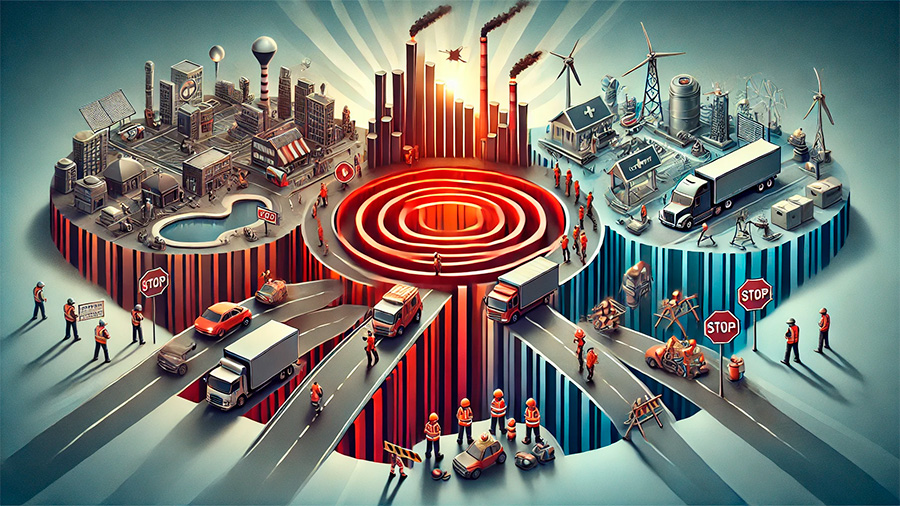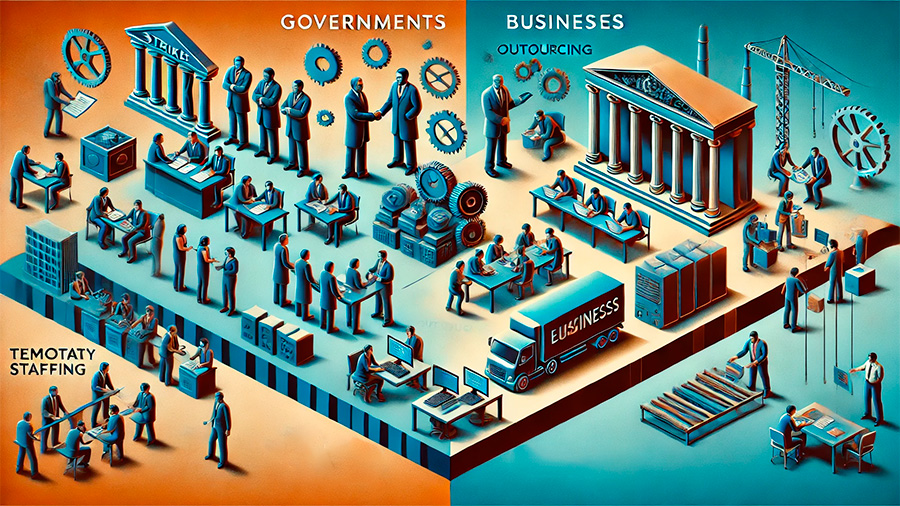
How Labor Strikes Influence Economic Growth and Stability
Strikes have long been a tool for workers to demand better wages, working conditions, and rights. While they are essential for protecting employees’ interests, strikes in various sectors can have far-reaching consequences, including disrupting economic stability and affecting consumer confidence. The ripple effects of labor strikes can be felt across industries, impacting everything from production to service delivery, ultimately shaking the foundation of economic growth.
The Impact of Strikes on Economic Stability
Strikes can create significant instability in both local and national economies. When workers halt their activities, industries lose productivity, leading to delays in production, supply chain disruptions, and lost revenues for businesses. This, in turn, can affect overall economic output.
- Loss of Productivity: In sectors like manufacturing, transportation, or energy, strikes can result in reduced output, affecting the supply of goods and services.
- Ripple Effect on Supply Chains: Industries that rely on timely deliveries, such as retail and healthcare, experience delays and shortages when transportation workers strike, which can slow the entire economy.
- Revenue Losses: Businesses directly impacted by strikes face immediate financial losses, and this can trickle down to other sectors as reduced spending affects other areas of the economy.
Strikes and Their Effect on Consumer Confidence
When strikes disrupt everyday services, such as transportation, healthcare, or education, they can significantly erode consumer confidence. People start to question the reliability of essential services and goods, leading to cautious spending and hesitation in making significant financial commitments.
1. Disruption of Daily Life
Strikes in critical sectors, such as public transportation or food distribution, have a direct impact on consumers. When people are unable to get to work, shop for essential items, or access healthcare, it disrupts daily life and creates uncertainty.
- Public Transportation Strikes: When bus or train drivers go on strike, commuters are left stranded, affecting not only their daily routine but also businesses that rely on customer access.
- Healthcare Strikes: Medical professionals striking for better wages can delay treatments, surgeries, and other critical services, causing widespread concern among patients and families.
2. Uncertainty in the Market
A prolonged strike, especially in key industries such as transportation or energy, introduces uncertainty into the market. This uncertainty can make consumers wary of making large purchases, investments, or even continuing with their usual consumption patterns. A lack of consumer confidence can lead to reduced spending, which in turn, affects businesses and slows economic growth.

Strikes in Key Sectors and Their Broader Economic Effects
Strikes in specific sectors can have a more pronounced impact on the economy. Industries such as transportation, healthcare, and energy are vital to the functioning of a stable economy, and disruptions in these areas can trigger widespread economic challenges.
Transportation Strikes
The transportation sector, including airlines, railroads, and shipping companies, is critical for maintaining the flow of goods and services. When transportation workers strike, it creates bottlenecks in supply chains, delays shipments, and can even result in food and fuel shortages.
Healthcare Strikes
Strikes by healthcare workers can have far-reaching consequences on public health and the economy. Delays in medical services can worsen health outcomes for patients, leading to increased healthcare costs and lost productivity as workers struggle to access care. In extreme cases, unresolved healthcare strikes can contribute to a public health crisis.
Energy Sector Strikes
Strikes in the energy sector, such as those by oil refinery workers or utility employees, can disrupt the supply of electricity, fuel, and other critical resources. This can lead to price spikes in energy costs, affecting businesses and consumers alike, and further destabilizing the economy.

How Governments and Businesses Respond to Strikes
When strikes threaten economic stability, both governments and businesses are forced to take action. Governments often intervene by facilitating negotiations between workers and employers, aiming to resolve disputes quickly to restore order and maintain economic growth. Businesses, on the other hand, may rely on temporary staffing, outsourcing, or automation to maintain operations during a strike.
Government Intervention
In some cases, governments may enforce policies that limit the length of strikes or mandate arbitration to prevent prolonged economic disruption. These measures aim to protect essential services and ensure that industries critical to the economy, such as healthcare and energy, continue to function.
Business Strategies
To mitigate the effects of a strike, businesses may seek alternative means to maintain productivity, such as hiring temporary workers or utilizing technology to automate certain tasks. While these solutions can provide short-term relief, they rarely address the root causes of the strike, which may require more permanent labor negotiations.
Conclusion
Strikes are an essential part of labor movements, but their impact on economic stability and consumer confidence cannot be ignored. In key sectors such as transportation, healthcare, and energy, strikes can create significant disruption, leading to reduced productivity, increased costs, and broader economic instability. For economies to maintain stability during labor disputes, timely resolutions and proactive government and business strategies are necessary. Without these measures, strikes can continue to erode consumer confidence and slow economic growth, creating long-term consequences for the broader economy.
Calendar
| M | T | W | T | F | S | S |
|---|---|---|---|---|---|---|
| 1 | 2 | 3 | 4 | 5 | 6 | |
| 7 | 8 | 9 | 10 | 11 | 12 | 13 |
| 14 | 15 | 16 | 17 | 18 | 19 | 20 |
| 21 | 22 | 23 | 24 | 25 | 26 | 27 |
| 28 | 29 | 30 | ||||
